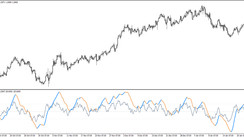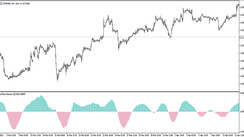Swing trading is a dynamic practice blending fundamental and technical analysis to capitalize on significant price swings while minimizing idle times. The allure of this trading approach is its efficient use of capital leading to higher returns. However, it does come with increased commissions and volatility.
Swing trading can be quite challenging for the ordinary retail trader. Expert traders often have a distinct advantage due to their extensive experience, access to greater leverage, wealth of information, and lower commission rates. However, they're restricted by their tradeable instruments, risk-taking capacity, and vast capital. Large trading institutions typically trade on a scale too large for swift entry or exit from stocks.
Resourceful retail traders can leverage these conditions to generate consistent profits in the market. Here's a snapshot of an efficient daily routine and strategy for a swing trader—guidelines that can help you optimize your trading ventures.
The Essentials of Swing Trading: Mastering the Waves of the Market
Swing trading is a dynamic form of trading, skillfully merging fundamental and technical analysis to capture pivotal price shifts while sidestepping idle times. This dance between risk and reward aims to optimize the use of capital and reap higher returns, however, it's not without its challenges:
- Increased commissions
- Heightened volatility
Breaking Down the Swing Trading World:
1. The Players:
-
Professional Traders: Equipped with vast experience, superior leverage, comprehensive information, and lower commissions, they might seem to hold all the cards. But they have their fair share of limitations: restricted trading instruments, the level of risk they can take on, and large capital volumes that can be cumbersome to maneuver.
-
Retail Traders: Everyday traders might appear at a disadvantage, but their nimbleness allows them to turn the limitations of professional traders into opportunities, carving out consistent profits in the marketplace.
2. The Routine:
An effective daily swing trading routine can be a game-changer. Here's what it typically looks like:
-
Early Start: Retail swing traders are often early risers, kick-starting their day at 6:00 a.m. EST for pre-market research.
-
Planning Trades: Based on the day's financial news, they strategize potential trades.
-
Market Hours: These are periods of vigilance, observation, and executing trades.
-
After-Market Review: Rather than trading, this time is dedicated to evaluating and reviewing the day's activity.
By understanding these elements, swing traders can navigate the market's waves with success and enhance their trading activities.
Pre-Market Preparations
Retail swing traders are often early birds, embarking on their day at 6:00 a.m. EST, much before the hustle and bustle of the market begins. This calm before the storm is instrumental for gauging the pulse of the day's market, spotting potential trades, curating a watchlist, and importantly, keeping tabs on existing positions.
1. Starting the Day with a Market Overview
The first order of business is to get a head start on the day's latest market news and developments. This information gathering can swiftly be done by tuning into trusted sources like CNBC or perusing reputable websites like Market Watch. As traders absorb this information, they need to pay special attention to:
- The general market mood (Are we looking at a bullish or bearish day? What do key economic reports say? How are the currency trends and overseas trading sessions shaping up?)
- Sector-specific sentiment (Which sectors are basking in the limelight? Which ones are showing promise?)
- Current portfolio updates (Is there any news, earnings reports, or SEC filings that directly affect the trader's holdings?)
2. On the Hunt for Potential Trades
Once armed with an overview, traders step into the role of detectives, hunting for potential trades for the day. Swing traders generally enter the market driven by a fundamental catalyst and then utilize technical analysis to manage or exit these positions.
Finding these fundamental catalysts is akin to mining for gold:
- Special opportunities: These treasures can be found in the world of SEC filings or amongst the day's headline news. Opportunities could span across initial public offerings (IPOs), bankruptcies, insider buying, buyouts, takeovers, mergers, restructurings, acquisitions, and other such impactful events. While they carry substantial risk, they could strike gold for diligent traders who invest time in thorough research.
- Sector movements: This requires analyzing the news or consulting financial websites to find out which sectors are the current market darlings.
Yet another window of opportunity for swing traders lies in chart breaks. These traders keep a keen eye out for specific patterns that suggest potential breakouts or breakdowns—triangles, channels, Wolfe Waves, Fibonacci levels, Gann levels, and so on.
3. Creating a Watchlist
Having identified potential opportunities, the next step is to assemble a watchlist of stocks for the day. These aren't just any stocks; they carry a fundamental catalyst and hold promise to be profitable trades.
4. Checking Up on Existing Positions
Finally, in the quiet of the pre-market hours, traders turn their attention to their existing positions. They sift through the news to ensure no significant events have occurred overnight that could affect their stocks.
This meticulous pre-market preparation sets the tone for the rest of the day, ensuring that the trader is fully primed for the market hours.
Market Hours Activities: Navigating the Trading Ebb and Flow
When the market clock chimes 9:30 a.m. EST, the swing trader's day truly begins. This vibrant period is one of observation, decision-making, and executing meticulously planned trades.
1. Deep Dive with Level II Quotes:
- Swing traders find level II quotes invaluable, revealing the key players and the volumes they are trading.
- Seasoned day traders often identify which market maker is behind the trades, providing a deeper insight into the market's movements.
2. Crafting an Exit Strategy:
- Once a profitable trade is identified and executed, the focus shifts to formulating an exit strategy, often guided by technical analysis.
- Tools like Fibonacci extensions, simple resistance levels, or price by volume become essential components of a trader's toolkit.
3. Trade Adjustments:
- Ideally, an exit strategy is devised before a trade is placed, but the day's trading dynamics might call for subsequent tweaks.
- Remember, adjustments should never lead to additional risk; they should lock in profits or cater to bullish trends.
4. Art and Science of Trading:
- Trade entry often relies more on art than science, dictated by the day's trading activity.
- Conversely, trade management and exiting follow a more precise, scientific approach.
Post-Market Review: Reflections and Improvements
1. A Time for Evaluation, Not Execution:
- After-market hours are rarely used for placing trades, primarily due to market illiquidity and substantial spreads.
- However, this time is invaluable for performance evaluation, a critical process for identifying areas that need improvement.
2. Importance of Record-Keeping:
- Keeping a meticulous record of all trades and ideas is a necessity, essential for both tax purposes and performance evaluation.
3. Position Reassessment:
- This period also calls for another look at open positions, with a close eye on after-hours earnings announcements or other impactful events.
Conclusion: Charting a Course in the Market's Waves
Swing trading is less a destination and more an exciting journey. It's a thoughtful blend of research, planning, and keen observation leading to success in the dynamic marketplace.
1. Embrace the Routine:
- A daily trading routine like the one detailed here can bolster your trading prowess.
- Careful attunement to the market's rhythm can enhance trading activities and potentially outpace market returns.
2. Blend of Tools:
- Successful swing trading takes a mix of reliable resources, meticulous planning, and preparation.
- Navigating the turbulent waters of swing trading may be challenging, but the rewards can be well worth the voyage.





